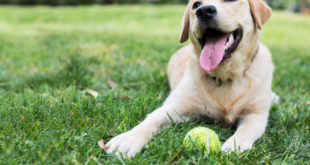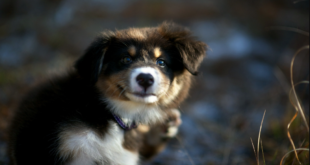When it comes to puppies, their love for biting seems to be endless. From shoes to furniture to your own hands, they just can’t resist the urge to chomp down on everything in sight. This behavior can quickly become a nuisance, causing frustration and potentially leading to destructive habits. So, what can you do to tame your pup’s chomping habit? It’s time to gear up for the battle of the leash and find out.
Table of Contents
1. “The Furry Foe: A Beginner’s Guide to Taming a Pup’s Chomping Habit”
Whether you’re a first-time dog owner or a seasoned pro, dealing with a pup’s chomping habit can be frustrating and overwhelming. But fear not! With the right tools and techniques, you can successfully tame your furry foe’s penchant for biting and chewing.
First and foremost, it’s important to understand that puppy biting is a natural behavior. Puppies explore the world with their mouths, and biting is their way of testing boundaries, initiating play, and relieving teething discomfort. It’s up to you to teach your pup what is and isn’t acceptable biting behavior.
To start, provide your pup with plenty of appropriate chew toys and bones to satisfy their natural urge to bite and chew. If your pup starts to nip or bite you, say “no” firmly and offer them a chew toy instead. Consistency is key – every time your pup tries to nip or bite, redirect them to a chew toy and praise them when they take it.
In addition to redirecting your pup’s biting, it’s important to teach them commands like “leave it” and “drop it.” These commands can come in handy if your pup gets ahold of something they shouldn’t be chewing on. Practice these commands regularly and use positive reinforcement to encourage your pup to obey.
By providing your pup with appropriate chew toys, redirecting their biting behavior, and teaching them commands to control their impulses, you can successfully tame your furry foe’s chomping habit. Remember to remain patient and consistent in your training, and your pup will be well on their way to becoming a well-behaved and happy member of your family.
2. “Sharpening Your Weapons: Preparing for the Battle of the Leash”
When it comes to walking your furry friend, there’s no telling what could happen. Your walk could go smoothly, or it could turn into a battle of tug-of-war over the leash. Regardless, it’s important to be prepared for any situation that may come your way.
One way to prepare yourself is to invest in a durable leash. Look for a leash that’s made of strong material, such as leather or nylon. This will ensure that your furry friend won’t be able to break away from you if they try to make a run for it.
In addition to a strong leash, it’s also important to have a good grip on it. Consider getting a leash with a padded handle or one that has a rubber grip. This will help you maintain control over your furry friend, even if they get a bit rowdy on their walk. With the right leash and a good grip, you’ll be ready to tackle any challenge that may come your way on your walk.
3. “Strategic Maneuvers: Winning the War Against Your Puppy’s Chomping”
There is nothing more frustrating than having a new puppy constantly chomping on everything in sight. However, there are strategic maneuvers you can implement to win the war against your puppy’s chomping.
Firstly, it’s important to recognize the reason behind your puppy’s chomping behavior. In most cases, it’s simply a natural instinct for puppies to explore their new surroundings through their mouths. To combat this behavior, provide your puppy with plenty of toys that are specifically designed for teething. These toys will satisfy their natural desire to chew, and also help to soothe their sore gums. Boldly emphasize the importance of getting the right toys, the right shapes and sizes, and how to use them effectively to help the puppy learn to differentiate between appropriate objects to chew on or not.
Another effective strategic maneuver is to create a puppy-proof environment. This means removing all valuable and potentially dangerous items from your puppy’s reach. It’s also important to provide appropriate spaces for your puppy to run around in, like a designated play area or a crate. Creating safe spaces for the puppies to play in without worry and stress can go a long way in decreasing their need to chew everything in sight. With these strategic maneuvers, you can teach your puppy that chomping on inappropriate objects is not acceptable and redirect their attention towards appropriate items to chew.
4. “Coping with Defeat: What to Do When Your Pup Wins the Battle of the Leash”
When your pup wins the battle of the leash, it can leave you feeling defeated. Here are some coping strategies to help you bounce back:
- Take deep breaths and try to stay calm. Getting mad or frustrated will only make the situation worse.
- Practice positive reinforcement. Reward your pup when they behave well on walks, and use treats or toys as distractions when they get too excited.
- Consider using a harness instead of a collar, as it can give you more control over your pup’s movements.
It’s important to remember that training a dog takes time and patience. Don’t give up after one setback. Keep practicing and reinforcing good behavior, and eventually your pup will learn to walk calmly on a leash. In the meantime, try to enjoy the little moments of progress and bonding that happen along the way.
5. “Lessons Learned: How to Prevent Future Chomping Habits in Your Pup
One of the key takeaways from dealing with a dog that loves to chew is to keep them occupied with plenty of toys. Make sure to choose durable toys that are safe for your pup to play with. You can also try stuffing toys with treats or peanut butter to keep your dog’s attention for a longer period of time. Additionally, make sure to rotate your pup’s toys regularly to prevent them from getting bored with their existing toys.
It’s important to establish rules and boundaries with your dog early on. This includes providing consistent training and positive reinforcement, so your pup understands what is allowed and what isn’t. If your dog starts to chew on something that they shouldn’t, redirect their attention to an appropriate toy and praise them for chewing on the correct item. Over time, your pup will learn what is acceptable to chew on and what isn’t.
Finally, always supervise your dog and make sure they are in a safe environment. Keep them away from items that are harmful or toxic, and don’t leave them unsupervised for extended periods of time. With the right approach to training and providing plenty of toys, you can prevent your dog from developing a chomping habit and enjoy a long and healthy relationship with your beloved four-legged friend.
With persistent practice and gentle reminders, dogs can learn to transition from the frenzied chomping of puppyhood to more controlled and considerate behavior as they grow older. When combined with music, play, and fresh air, training your pup to control his chomping can be an enjoyable experience for both of you!
 Treat For Dog – Brain Training for Dogs, Dog Training & Obedience Discover Treat For Dog and get your pup on the path to smarter, happier, and healthier living with brain training for dogs.
Treat For Dog – Brain Training for Dogs, Dog Training & Obedience Discover Treat For Dog and get your pup on the path to smarter, happier, and healthier living with brain training for dogs.




